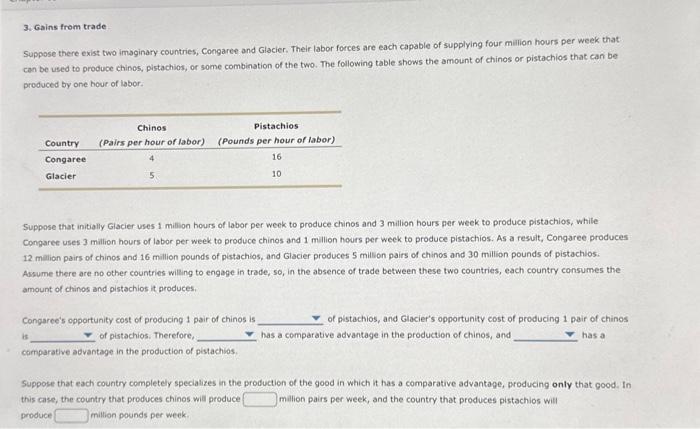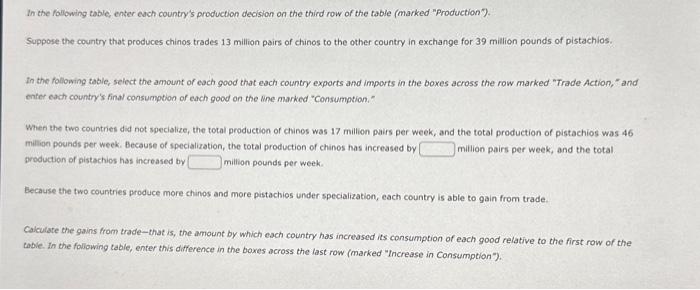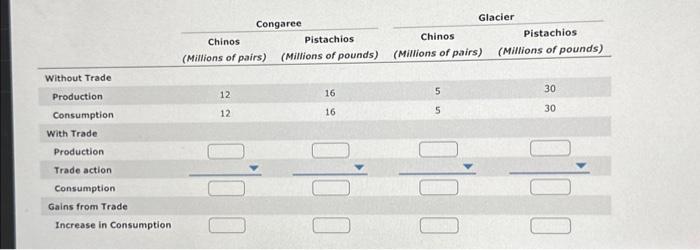3. Gains from trade Suppose there exist two imaginary countries, Congaree and Glacier. Their labor forces are each capable of supplying four million hours per week that can be used to produce chinos, pistachios, or some combination of the two. The following table shows the amount of chinos or pistachios that can be produced by one hour of labor: Suppose that initially Giacier vses 1 million hours of labor per week to produce chinos and 3 million hours per week to produce pistachios, while Congaree uses 3 mallion hours of labor per week to produce chinos and 1 million hours per week to produce pistachios. As a result, Congaree produces 12 malion pairs of chinos and 16 million pounds of pistachios, and Glacier produces 5 million pairs of chinos and 30 million pounds of pistachlos. Assume there are no other countries willing to engage in trade, so, in the absence of trade between these two countries, each country consumes the amount of chinos and pistachios it produces. Congaree's opportunity cost of producing 1 pair of chinos is of pistachios, and Glacier's opportunity cost of producing 1 pair of chinos is of pistachios, Therefore, has a comparative advantage in the production of chinos, and has a comparative advantage in the production of plstachios. Suppose that each country completely specializes in the production of the good in which it has a comparative advantage, producing only that good. In this case, the country that produces chinos will produce malion pairs per week, and the country that produces pistachios will produce million pounds per week. In the following table, enter each country's production decision on the third row of the table (marked "Production"). Suppose the country that produces chinos trades 13 million pairs of chinos to the other country in exchange for 39 million pounds of pistachios. In the following table, select the amount of each good that each country exports and imports in the boxes across the row marked "Trade Action," and enter each country's final consumption of each good on the Ine marked "Consumption." When the two countries did not specialize, the total production of chinos was 17 million pairs per week, and the total production of pistachios was 46 million pounds per week. Because of specialization, the total production of chinos has increased by milion pairs per week, and the total production of pistachios has increased by million pounds per week. Because the two countries produce more chinos and more pistachios under specialization, each country is able to gain from trade. Calculate the gains from trade-that is, the amount by which each country has increased its consumption of each good relative to the first row of the toble. In the following table, enter this difference in the boxes across the last row (marked "Increase in Consumption")









